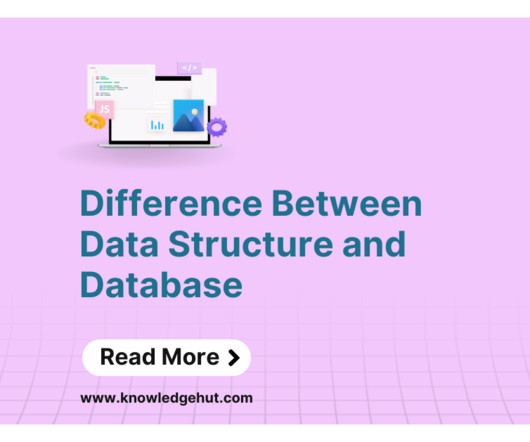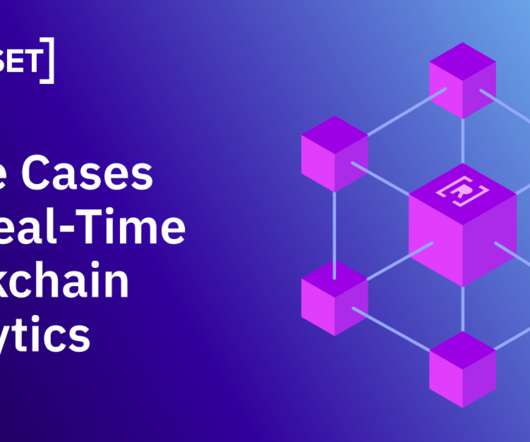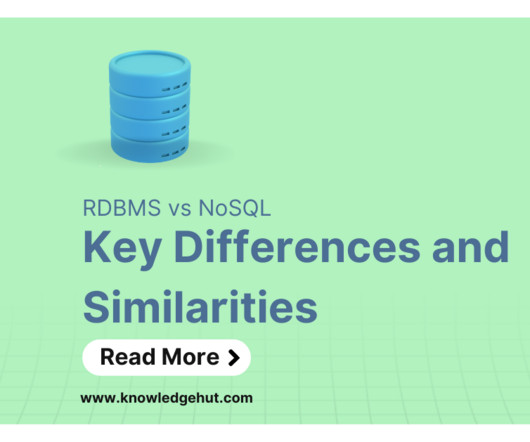Difference Between Data Structure and Database
Knowledge Hut
MARCH 27, 2024
Essential in programming for tasks like sorting, searching, and organizing data within algorithms. Examples MySQL, PostgreSQL, MongoDB Arrays, Linked Lists, Trees, Hash Tables Scaling Challenges Scales well for handling large datasets and complex queries. Supports complex query relationships and ensures data integrity.












Let's personalize your content